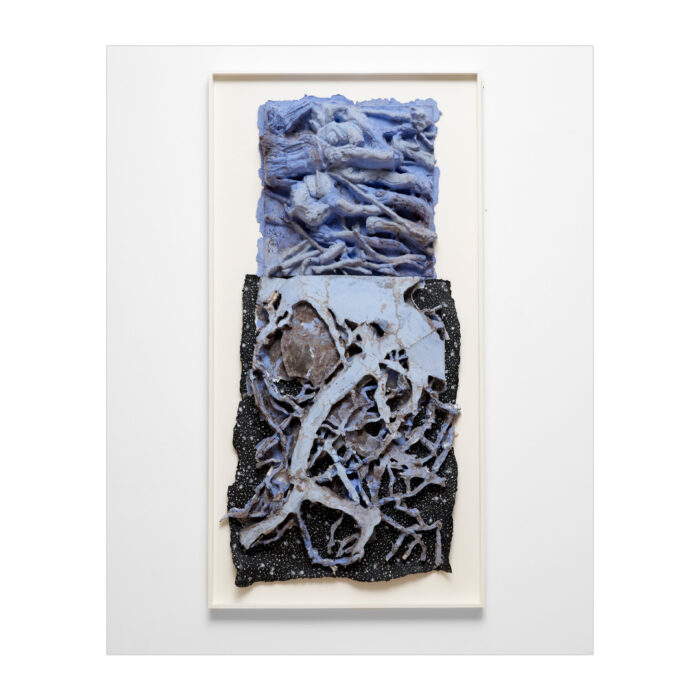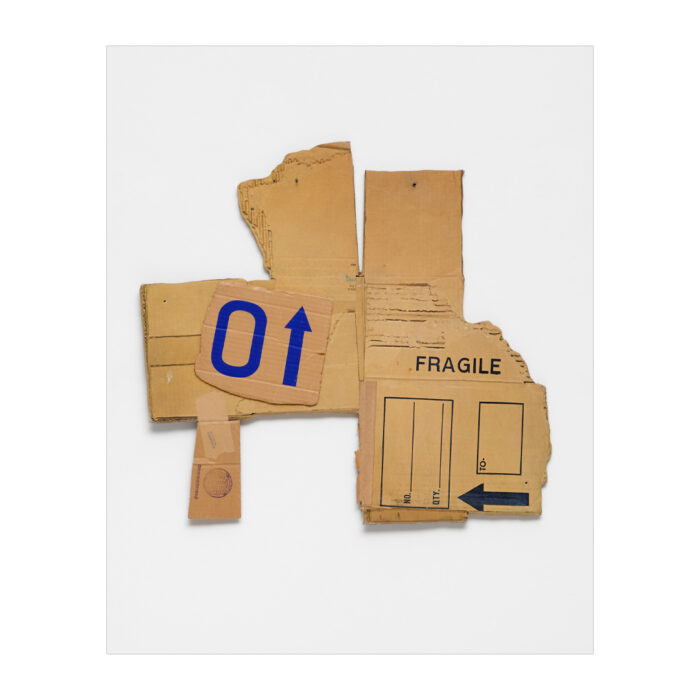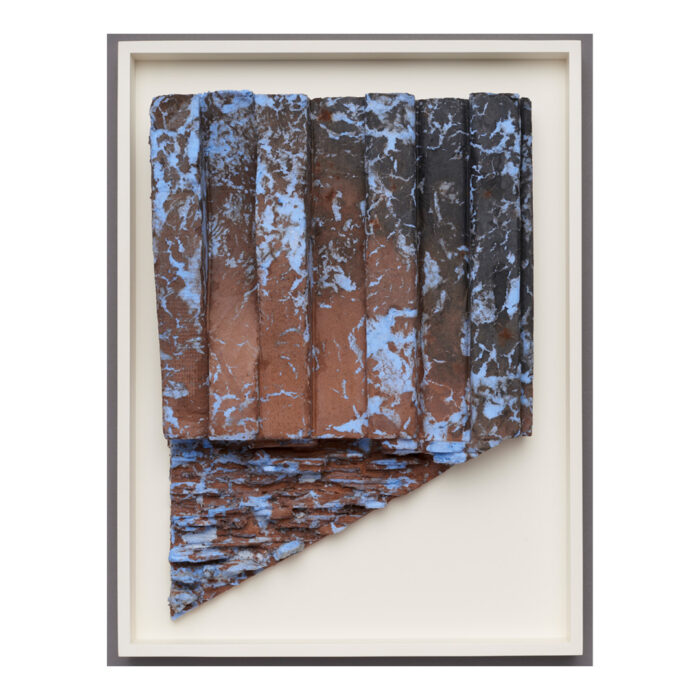Leonardo Drew & Friends
Jordan Schnitzer Family Foundation
International Fine Print Dealers Association Print Fair (IFPDA)
February 15 – 18, 2024
New York
Leonardo Drew & Friends took the spotlight at the International Fine Print Dealers Association Print Fair (IFPDA) in New York, graciously hosted by the Jordan Schnitzer Family Foundation. Throughout our conversation, Leonardo Drew offers profound insights into his recent exhibition, and delves into his curatorial process and artwork selection from the Jordan Schnitzer Family Foundation’s impressively vast archive that boasts over 22,000 artifacts.
During his live discussion at IFPDA with Jordan Schnitzer, Drew explored the concept of “cannibalizing” his work for new iterations, highlighting the perpetual evolution inherent in his artistic practice. He emphasized the importance of understanding his work’s history to drive its forward momentum, reflecting a philosophy of continual reinvention evident in his printmaking approaches.
Amongst renowned pieces like Robert Rauschenberg’s Cardbird VI and Hank Willis Thomas’ Smokin’ Joe Ain’t J’mama, Drew formulated connections between his work and that of his contemporaries, elucidating the ideas that attracted him to these pieces. Additionally, he provided valuable insights into the inclusion of Julie Mehretu’s Corner of Lake and Minnehaha and Matthew Day Jackson’s LIFE, June 5, 1944, enriching the exhibition’s collaborative and art historical dialogue, while also adding context to aspects from his own studio processes.
Drew intricately explored the layers beneath the colossality of Leonardo Drew & Friends, offering a deeper understanding of his vision and the profound connections uniting his works with those of his inspiring friends – Robert Rauschenberg, Julie Mehretu, Matthew Day Jackson, and Hank Willis Thomas.

Clare Gemima: Leonardo, your work often deals with the balance between order and chaos. I am curious, did you have to navigate a similar balance while preparing for your curated presentation, recently shown at the IFPDA in New York, Leonardo Drew & Friends?
Leonardo Drew: The concepts of order and chaos are not far apart from one another. In nature and life, they always exist hand in hand. This is also true in my work and my philosophy. These concepts are not disparate situations, rather they exist as part of one another. All of the artists in the exhibition are in one with each other.
Clare Gemima: I would like to talk more about your curatorial process before getting into your own work. What was it like to rummage through the Jordan Schnitzer Family Foundation’s extensive archive in Portland, Oregon, and what was your initial approach to the brief? How did you begin?
Leonardo Drew: The first step was realizing and educating myself on what’s in the archive. Jordan is a voracious collector, and he has a very precise and exacting way of collecting work. He is such a committed collector and really gets a sense of the artists’ voice in building his collection. With that kind of commitment, you really already have a hand up in the curatorial process, because the aesthetics and approach of the collection are so sound. With that, I just navigated the collection and found artists I gravitated towards like Rauschenberg, Jackson, Mehretu, and Hank. After seeing the visual effect when they hung on the wall, it all made sense.

Clare Gemima: Was your curation led by personal, political, aesthetic, or thematic curiosity? Additionally, what was your biggest take away as an artist from having navigated the collection?
Leonardo Drew: All the artists that I selected found their voices and continue to enhance their language out of sheer commitment to their journeys. It is a quality that is admirable and an absolute necessity to becoming a master at what you do.
Clare Gemima: You chose to showcase a number of your sculptural prints alongside historic and monumental works like Robert Rauschenberg’s corrugated cardboard screenprint Cardbird VI, (1971), and Hank Willis Thomas’ digital chromogenic print, Smokin’ Joe Ain’t J’mama, (1978/2006). What was it that drew you to these two works specifically?
Leonardo Drew: Rauschenberg and Willis Thomas are relatable to one another. I don’t see them as disparate, but rather as works that communicate and go hand in hand with each other. The historical aspects of Willis Thomas with Joe Fraser – you can’t look at that without understanding the weight of the image and what he’s brought together. With Rauschenberg, I also see the sheer physicality of this work and the aesthetics involved in the selection of materials as being in line with my approach to materiality and my visuals. They both pull from things that are historic, both in material and imagery.

Clare Gemima: Similarly, what did Julie Mehretu’s screenprint, Corner of Lake and Minnehaha (blue), (2022), and Matthew Day Jackson’s rust transfer wood block LIFE, June 5, 1944, (1974), ignite in you, and how did the inclusion of these works contribute to Leonardo Drew & Friends’ wider, art historical discourse between all four artists, and yourself?
Leonardo Drew: With Mehretu there is a deep and powerful understanding of mark-making and drawing. Outside of the visuals, there is a consistency with which the work follows this journey of commitment that is fascinating. In Jackson’s work, the connection and history with rust is looming. There is always a natural attraction to someone else who is using a material from my own history.
Clare Gemima: Alot of your own works frequently reference America’s industrial past, and the history of African Americans embedded within societal narratives and cultural memory. Do the other works you chose to include in your presentation consider similar ideas to this, or others that powerfully resonate with you?
Leonardo Drew: I collect experiences and bring them into what I will be creating today, tomorrow, and beyond. It is a journey. The idea of commitment as a throughline is a part of the journey of all the artists that I selected. That is the actual attraction.

Clare Gemima: While working with a diverse range of materials, handling and assembling various types of woods, metals, textiles and floor tiles, many of your pieces in Leonardo Drew & Friends involve the casting of printed and pigmented handmade paper. How do you use your hands in this process?
Leonardo Drew: I use my hands in everything I do. While working at Pace Prints, I would go back to the studio and create things and bring them back to the print studio. I would bring something physical for the master printers to work with. They really applied themselves and the end result was something that introduced me to new possibilities.
Clare Gemima: How does the utilization of building materials differ from the collaborative and often intricate process of printmaking? How do your material parameters shift, especially considering most of your work maintains sculptural, and 3-dimensional forms.
Leonardo Drew: The whole premise of my going to Pace Prints was to add something more aggressive to printmaking. I went in with my aesthetics and applied myself aggressively to sculpted prints that are noticeably different and demand a certain level of visual respect. They are unique works. The master printmakers I work with are also really committed to pushing the limits of printmaking in new directions. They never said ‘no’. I ask for the impossible, and they got it done! It’s just an incredible experience to have artists and artisans who not only get it, but who are also making an attempt to achieve something new. Through this partnership, we ended up adding to the language of printmaking overall.

Clare Gemima: During your live conversation at the IFPDA with Jordan Schnitzer, you talked about how someone had mentioned that you “cannibalize” your work in order to create the next iteration of it in the studio. What does this statement mean, and how does this approach unfold specifically in printmaking?
Leonardo Drew: The idea of cannibalization sounds comical, but it does truthfully apply itself as a means to an end. Change is a constant. All the works are merging and progressing. To create something new, you also must have an understanding of its history. No single work is sacred in my studio, I often look at what has come before to realize its next iteration. These things all have previous lives, that you borrow from to realize the future endeavor. This is how you perpetuate the next iteration of the work. The strongest works are realized from those through points. This philosophy applies to all facets of my work.
Clare Gemima: Considering the changing art landscape, what sort of challenges or opportunities arise for you within the context of an art fair, as opposed to a museum showcase or gallery exhibition?
Leonardo Drew: The art fairs are interesting in and of themselves because they foster a strong collector base. They create an environment wherein you have an aggressive collector base that comes to see the best of each medium at that moment. Art fairs create an environment where you have the opportunity to see the best of the best from all over the world, all in one place. It’s the equivalent of having all of your favorite galleries and artists in one place and at the same time. I don’t attend them very often, because they are also a bit of a feeding frenzy, and artists don’t often like to get caught up in that. But the kind of leadership and supportive collector base that participate is incredible and an absolute necessity. It’s really great that they exist – they are an absolute boon.
